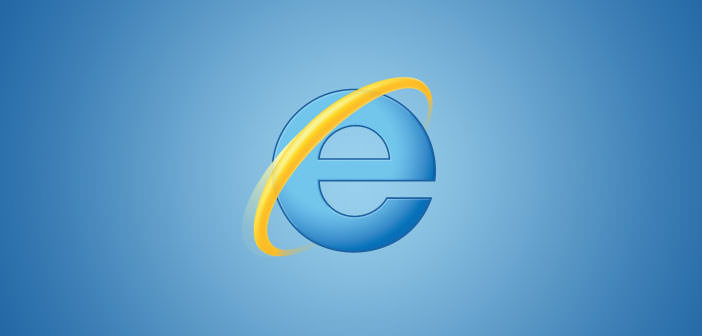The historian Microsoft’s browser has switched off on August 16 the twentieth candle, and is going with Windows 10 to give way to Microsoft Edge.
In the days of screeching dial-up modems and big CRT monitor, Microsoft released Internet Explorer 1.0. It was exactly 16 August 1995, when the browser history of Redmond was integrated into special package Plus! for Windows 95 together with a series of themes, screen savers, games and other content. Twenty years have passed since then, where we witnessed the rise and fall of a program which has assisted hundreds of millions of users navigate online.
Internet Explorer 1.0 size 1 MB, and besides allowing web browsing did not do much else, not even supporting graphics or dynamic content. A few months later, Microsoft released Internet Explorer 2.0, but the most important release occurred in 1996, when version 3.0 introduced the famous logo with the blue and support for CSS, and images.
The Trident engine, still used today by Microsoft’s browser, Internet Explorer 4.0 was implemented, installed natively on Windows 98. It was this move that has enabled Microsoft to acquire the bulk of the market share of web browsers, greatly accelerating the decline of Netscape. Internet Explorer 5.0 was born in 1999, and with Windows XP in 2001, he came to Internet Explorer 6.0.
The 6.0 was one of the most long-lived and used versions of the browser, thanks to the sustained success of Windows XP. Internet Explorer 7.0 (2006) introduced the tab instead, support for RSS and protecting native to phishing attacks. Meanwhile emerged Mozilla Firefox, whose first release was released in 2004, and in 2008 was born Chrome, the Google browser.
Internet Explorer has caused major headaches to Microsoft itself. The browser was born when America Online and Netscape had an undisputed domain of the Internet, creating the so-called ” browser war “. Because of the new software, Microsoft had to answer charges of antitrust several times, including the most problematic came after the release of Internet Explorer 8.0 in 2009 in Europe.
In Europe, Microsoft was forced to enter a ” Ballot Screen ” on Windows 7, in which the user could choose the web browser to be installed natively, among the popular choices in the market. The obligation of the Ballot Screen ceased in 2014. In the meantime, Microsoft released Internet Explorer 9 (2011). The first since the release of Internet Explorer 2.0 is not bundled with an operating system.
In 2012 it was released Internet Explorer 10, the native browser of Windows 8, but also available on Windows 7. In 2013 born instead Internet Explorer 11, the latest version of the software is still available. With the release of Windows 10, which occurred last month, Microsoft launched Edge, the new operating system’s default browser, but IE11 is still present on the operating system for compatibility reasons.
After 20 years in business, Internet Explorer is expected to retire. Loved and hated by the masses of Internet users, the web browser of Redmond was one of the key parts of the evolution of the Internet. It is replaced by the new Edge, and in the future will be completely removed from Windows but, for better or for worse, will never be forgotten.

